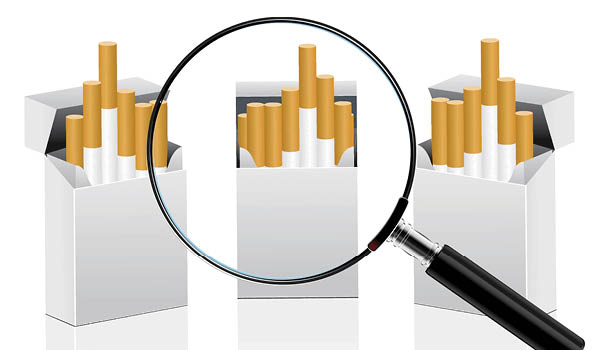The release of a new report on plain packaging of tobacco products has generated debate among the industry as to the effectiveness of the legislation, which was first introduced in 2012.
The packaging changes were brought into effect in December 2012 and required all tobacco products to be sold in standardised, plain packaging. The Post-Implementation Review (PIR) conducted by the Department of Health claims that since plain packaging was introduced there has been a steady decline in smoking over the past three years, from 19.4 per cent to 17.2 per cent.
“The analysis estimated that the 2012 packaging changes resulted in a ‘statistically significant decline in smoking prevalence [among Australians aged 14 years and over] of 0.55 percentage points over the post-implementation period, relative to what the prevalence would have been without the packaging changes’,” the report stated.
“This decline accounts for approximately one quarter of the total decline in average prevalence rates observed between the 34 months prior to implementation of the measure and the 34 months following the implementation of the measure (the total decline between the two periods was estimated as being 2.2 percentage points, with average prevalence falling from 19.4 per cent to 17.2 per cent).”
Not conclusive, no hard data: BATA
British American Tobacco Australia (BATA) said the review “did not provide any conclusive evidence [plain packaging] has worked”.
BATA spokesperson Scott McIntyre said The Australian National Drug Strategy Household Survey (ANDSHS) shows that the proportion of daily smokers has been declining steadily over a long time and is almost exactly on trend despite plain packaging.
“The ANDSHS also shows that the percentage of 12-17 year olds who smoked on a daily basis increased from 2.5 per cent to 3.4 per cent between 2010 and 2013 which is the highest rate since 2004. That’s a 36 per cent increase in young people smoking during the time plain packaging was introduced,” Mr McIntyre said.
BATA further claims the PIR data doesn’t delineate between the impact of tobacco excise hikes and plain packaging, arguing the majority of the PIR report focussed on the tobacco control research that examines sentiment and perception, rather than hard data such as sales and incidence.
Additional evidence from the industry shows that tobacco sales increased in the first full year following the introduction of plain packaging for the first time in over a decade.
“InfoView industry sales data demonstrates that legal volumes of tobacco grew by 59 million cigarettes or 0.3 per cent in the first 12 months following the implementation of plain packaging, Mr McIntyre said.
“Further, the latest illicit tobacco report4 shows that illegal tobacco now represents 14.3 per cent of all tobacco consumed in Australia. The black market has grown dramatically since plain packaging was introduced and the three 12.5 per cent excise increases have been implemented.”
Plain packaging “undeniably working”: National Heart Foundation
Following the release of the PIR report, the National Heart Foundation labelled the findings as “another win against Big Tobacco”
National Heart Foundation tobacco control spokesperson and president of the Australian Council on Smoking and Health, Maurice Swanson, said the report sends a clear message that plain packaging on tobacco products works.
“The report undeniably shows that the legislation is working and has been the catalyst for tens of thousands of adults quitting and saved the lives of many thousands of Australians,” said Mr Swanson.
“This is the result of implementing a comprehensive range of policies including bans on all forms of tobacco advertising and promotion, regular tax increases, hard-hitting public education campaigns, expansion of smoke free areas, and now plain packaging.”

